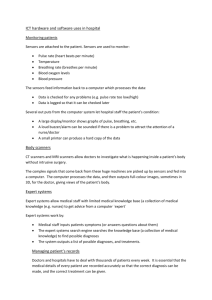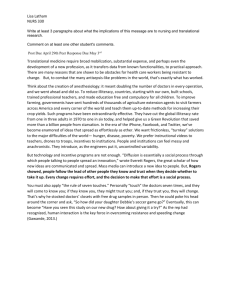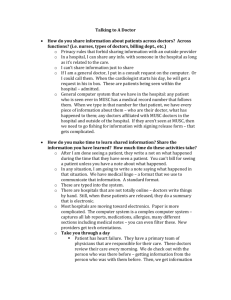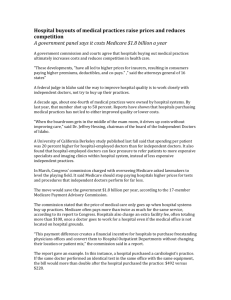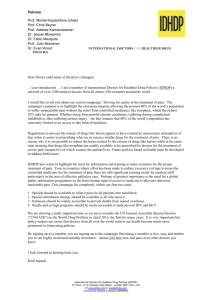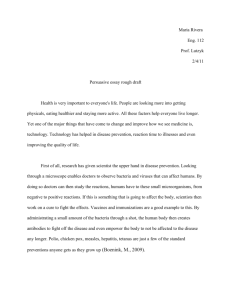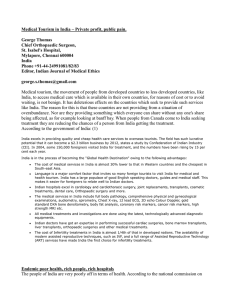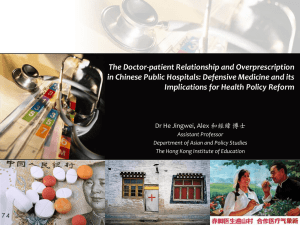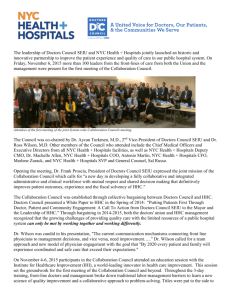medicines industrial revolution
advertisement
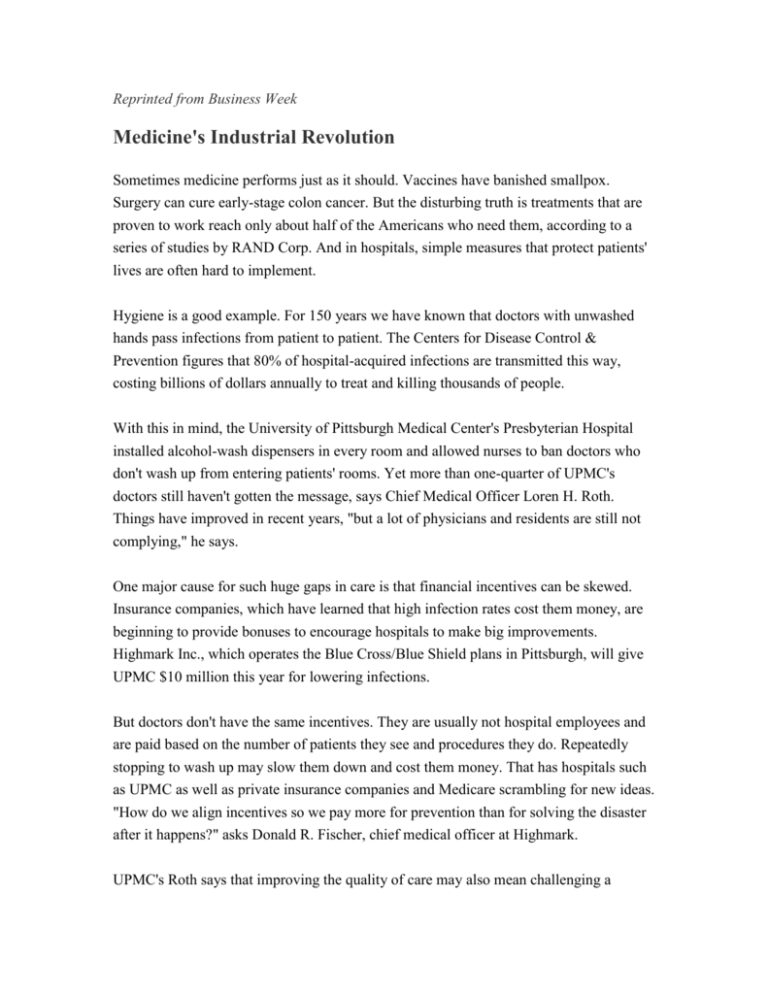
Reprinted from Business Week Medicine's Industrial Revolution Sometimes medicine performs just as it should. Vaccines have banished smallpox. Surgery can cure early-stage colon cancer. But the disturbing truth is treatments that are proven to work reach only about half of the Americans who need them, according to a series of studies by RAND Corp. And in hospitals, simple measures that protect patients' lives are often hard to implement. Hygiene is a good example. For 150 years we have known that doctors with unwashed hands pass infections from patient to patient. The Centers for Disease Control & Prevention figures that 80% of hospital-acquired infections are transmitted this way, costing billions of dollars annually to treat and killing thousands of people. With this in mind, the University of Pittsburgh Medical Center's Presbyterian Hospital installed alcohol-wash dispensers in every room and allowed nurses to ban doctors who don't wash up from entering patients' rooms. Yet more than one-quarter of UPMC's doctors still haven't gotten the message, says Chief Medical Officer Loren H. Roth. Things have improved in recent years, "but a lot of physicians and residents are still not complying," he says. One major cause for such huge gaps in care is that financial incentives can be skewed. Insurance companies, which have learned that high infection rates cost them money, are beginning to provide bonuses to encourage hospitals to make big improvements. Highmark Inc., which operates the Blue Cross/Blue Shield plans in Pittsburgh, will give UPMC $10 million this year for lowering infections. But doctors don't have the same incentives. They are usually not hospital employees and are paid based on the number of patients they see and procedures they do. Repeatedly stopping to wash up may slow them down and cost them money. That has hospitals such as UPMC as well as private insurance companies and Medicare scrambling for new ideas. "How do we align incentives so we pay more for prevention than for solving the disaster after it happens?" asks Donald R. Fischer, chief medical officer at Highmark. UPMC's Roth says that improving the quality of care may also mean challenging a bedrock belief: that each patient is unique and that doctors must bring individualized judgment to each case. This view "has a kind of appeal to it for both the profession and patients," says Roth, "but it is not so." Most illnesses and injuries can best be treated by standardizing care, he argues. The goal is to "industrialize every process we can." This idea horrifies some doctors, but businesses and insurance companies, who pay many of the bills, are cheering Roth on. "We know if you take beta blockers, you are much less likely to have a heart attack," explains Helen Darling, president of the Washington-based National Business Group on Health, which represents major employers. "We can reward you for meeting those standards." Independence Blue Cross has gone a step further. It gives physicians lists of members with chronic conditions such as diabetes and asthma. The list includes the recommended treatments and tells who has received them. "Then when a patient shows up, the missing services can be provided," explains Dr. I. Steven Udvarhelyi, senior vice-president at the insurer. Doctors, who were leery at first, have embraced the plan. Of course, you have to get people into physicians' offices. To do this, several health plans and companies have teamed up with Health Dialog Analytic Solutions, which identifies employees or plan members with the greatest needs and reaches out through phone calls and mailings. "The touch is very soft," says Joe Checkley, director of global benefits at American Standard Cos (ASD ). "It's saying: 'Here are some tools for you, and what can I do to help?"' The early results are good. At Independence Blue Cross, with about 2 million members, "we know that the program overall reduces medical costs by about 2%," says Udvarhelyi. "That's for the entire population, not just the people that we touch. For them the reduction is orders of magnitude larger." With efforts like these, treatments that do work are now getting to more of the people who need them.


